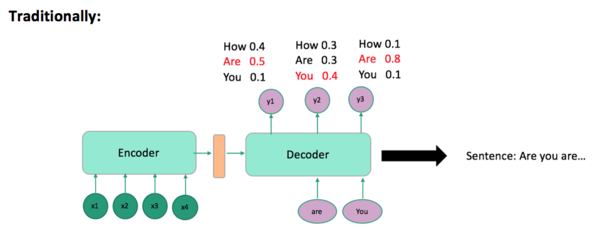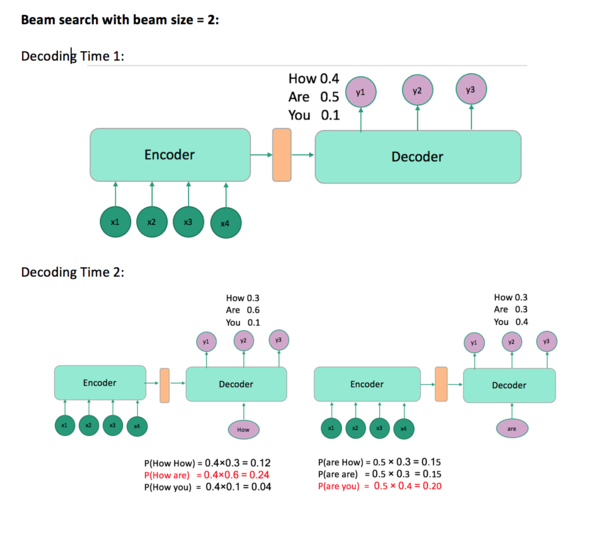STAT946F17/ Dance Dance Convolution: Difference between revisions
| Line 1: | Line 1: | ||
=Introduction= | =Introduction= | ||
Neural Machine Translation (NMT), which is based on deep neural networks and provides an end- to-end solution to machine translation, uses an '''RNN-based encoder-decoder architecture''' to model the entire translation process. Specifically, an NMT system first reads the source sentence using an encoder to build a "thought" vector, a sequence of numbers that represents the sentence meaning; a decoder, then, processes the "meaning" vector to emit a translation. (Figure 1)<sup>[[#References|[1]]]</sup> | ==Background Knowledge== | ||
*NTM | |||
'''Neural Machine Translation (NMT)''', which is based on deep neural networks and provides an end- to-end solution to machine translation, uses an '''RNN-based encoder-decoder architecture''' to model the entire translation process. Specifically, an NMT system first reads the source sentence using an encoder to build a "thought" vector, a sequence of numbers that represents the sentence meaning; a decoder, then, processes the "meaning" vector to emit a translation. (Figure 1)<sup>[[#References|[1]]]</sup> | |||
[[File:VNFigure1.png|thumb|600px|center|Figure 1: Encoder-decoder architecture – example of a general approach for NMT.]] | [[File:VNFigure1.png|thumb|600px|center|Figure 1: Encoder-decoder architecture – example of a general approach for NMT.]] | ||
*Beam Search | |||
Decoding process: | |||
[[File:VNFigure2.png|thumb|600px|center|Figure 2]] | |||
Problem: Choosing the word with highest score at each time step t is not necessarily going to give you the sentence with the highest probability(Figure 2). Beam search solves this problem (Figure 3). Beam search has a size m such that at each time step t, it takes the top m proposal and continues decoding with each one of them. In the end, you will get a sentence with the highest probability not in the word level. | |||
[[File:VNFigure3.png|thumb|600px|center|Figure 3]] | |||
=References= | =References= | ||
1. https://github.com/tensorflow/nmt | 1. https://github.com/tensorflow/nmt | ||
Revision as of 14:39, 24 November 2017
Introduction
Background Knowledge
- NTM
Neural Machine Translation (NMT), which is based on deep neural networks and provides an end- to-end solution to machine translation, uses an RNN-based encoder-decoder architecture to model the entire translation process. Specifically, an NMT system first reads the source sentence using an encoder to build a "thought" vector, a sequence of numbers that represents the sentence meaning; a decoder, then, processes the "meaning" vector to emit a translation. (Figure 1)[1]

- Beam Search
Decoding process:

Problem: Choosing the word with highest score at each time step t is not necessarily going to give you the sentence with the highest probability(Figure 2). Beam search solves this problem (Figure 3). Beam search has a size m such that at each time step t, it takes the top m proposal and continues decoding with each one of them. In the end, you will get a sentence with the highest probability not in the word level.
